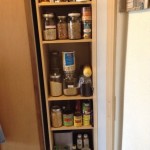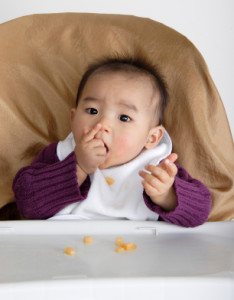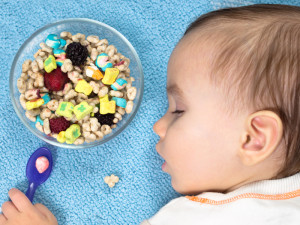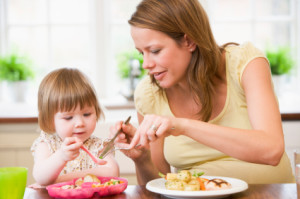Limiting Cow's Milk for Toddlers
/ Recently a parent asked me this question: “How much cow’s milk to offer toddlers. Do you allow them to regulate/drink as much as they want or just fill the cup up once and then when it's empty that's it? Being only 17 months, he can fill up pretty quick on milk during the meal, but I also don't want to be taking it away. I would prefer to just allow him to self regulate, but not sure what to do once the sippy cup is empty.”
Recently a parent asked me this question: “How much cow’s milk to offer toddlers. Do you allow them to regulate/drink as much as they want or just fill the cup up once and then when it's empty that's it? Being only 17 months, he can fill up pretty quick on milk during the meal, but I also don't want to be taking it away. I would prefer to just allow him to self regulate, but not sure what to do once the sippy cup is empty.”
Regulating Cow's Milk for Toddlers
It’s common for little ones to fill their tummies with milk instead of eating foods. To make sure that your child is getting the nutrition that he needs, use what I call the ‘control what's on the menu’ strategy regarding beverages (the same as with foods).
- Choose which meals/snacks you offer milk. In other words – you control what’s on the menu.
- Let him drink as much (i.e. as many glasses) of milk at those times as he wishes.
- At the other meals/snacks offer water.
This way there's no battle over how much milk he drinks. But he won't be able to fill his tummy with milk instead of eating at every meal/snack. Approx 500mL (2 cups) of milk provides calcium and vitamin D that little ones need without crowding out other nutritious foods. Little ones who drink more than 750mL (3 cups) of milk daily increase the risk that they’re not getting the nutrition that they need from eating a variety of foods. But again, it's not your job to referee how many cups he drinks at a meal/snack. Instead, use this as a guideline for how many meals/snacks to offer milk at. Restricting access (i.e. limiting the number of servings at a meal/snack) to a food or drink only increases a child’s desire for it. While restricting access usually comes from good intentions, it actually interferes with learning self-regulation. Another technique that can help make sure toddlers aren’t drinking too much cow’s milk is only offering milk in an open (lidless) cup. Often, toddlers who are drinking too much cow's milk are drinking it from a bottle or sippy cup. An open cup is more difficult for little ones to manage so it slows them down.
Get more nutrition tips for toddlers directly into your email inbox.



 March is Nutrition Month!
March is Nutrition Month! {Guest post I contributed to the
{Guest post I contributed to the  Kids begging for food while you're cooking. Do you experience this common situation? You rush home from work and daycare pick-up, drop your bag and coat, and immediately get to work in the kitchen making dinner (or should I say figuring out what’s for dinner and then making it?). As you’re cooking, your little one suddenly is famished. They’re underfoot, claiming that they’re “staaaarrrvvving” and begging you for something to eat. Saying that they couldn’t possibly wait the 10 minutes until dinner is ready.
Kids begging for food while you're cooking. Do you experience this common situation? You rush home from work and daycare pick-up, drop your bag and coat, and immediately get to work in the kitchen making dinner (or should I say figuring out what’s for dinner and then making it?). As you’re cooking, your little one suddenly is famished. They’re underfoot, claiming that they’re “staaaarrrvvving” and begging you for something to eat. Saying that they couldn’t possibly wait the 10 minutes until dinner is ready. {Guest Post at
{Guest Post at  Aah, beets. These versatile root veggies are one of my favourites! As a dietitian, part of my job is to know how to prepare healthy foods like beets. So I’m sharing a couple of my favourite ways to use them. A classic storage, root veggie, you can find local ones (fairly cheap) throughout the winter here in Victoria, BC.
Aah, beets. These versatile root veggies are one of my favourites! As a dietitian, part of my job is to know how to prepare healthy foods like beets. So I’m sharing a couple of my favourite ways to use them. A classic storage, root veggie, you can find local ones (fairly cheap) throughout the winter here in Victoria, BC. Could What I’m Feeding my Toddler be Keeping them Awake?
I'm often asked by parents about what foods are best at bedtime. And, if there's anything they shouldn't feed their kids before bed. There’s a lot of old wives tales and urban myths about foods and food ingredients either helping or hindering sleep, thus keeping toddlers awake. However, there isn’t strong evidence connecting specific foods and sleep –either preventing sleep or causing kids to fall asleep (and stay asleep).
Could What I’m Feeding my Toddler be Keeping them Awake?
I'm often asked by parents about what foods are best at bedtime. And, if there's anything they shouldn't feed their kids before bed. There’s a lot of old wives tales and urban myths about foods and food ingredients either helping or hindering sleep, thus keeping toddlers awake. However, there isn’t strong evidence connecting specific foods and sleep –either preventing sleep or causing kids to fall asleep (and stay asleep).

 A big thank you to the parent who shared this question: "How much is enough food for my baby? Tonight I thought I would give in and see how it went. He polished off…….
While she was specifically talking about how much food to provide at bedtime snack, I’m asked this question a lot, in fact I’m asked it at almost every workshop.
A big thank you to the parent who shared this question: "How much is enough food for my baby? Tonight I thought I would give in and see how it went. He polished off…….
While she was specifically talking about how much food to provide at bedtime snack, I’m asked this question a lot, in fact I’m asked it at almost every workshop.

 Thank you to the parent who sent in the following request for an article topic asking do toddlers like one-pot meals. In her own words “…whether toddlers tend to like a bunch of different foods in one plate (e.g. lots of choice), or a couple of choices, or a "one-pot meal")”
I can answer this in one phrase – all of the above.
Thank you to the parent who sent in the following request for an article topic asking do toddlers like one-pot meals. In her own words “…whether toddlers tend to like a bunch of different foods in one plate (e.g. lots of choice), or a couple of choices, or a "one-pot meal")”
I can answer this in one phrase – all of the above.